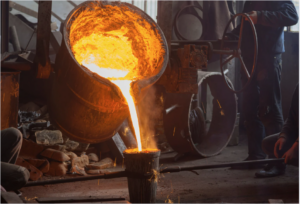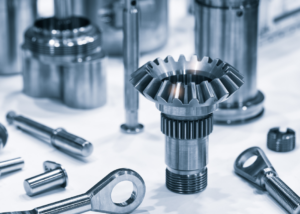
Make-to-order is a commonly adopted production method in the manufacturing industry. In the manufacturing industry, "make-to-order" is also common, where products are produced in advance based on demand forecasts and managed as inventory, and many companies have developed their businesses using this method. However, in order to avoid inventory risk due to fluctuating demand, an increasing number of companies are adopting "make-to-order" production, in which products are produced after orders are confirmed.
When implementing make-to-order production, it is important to carefully consider its advantages and disadvantages. This article will explain some important points for using make-to-order in your business.
Table of Contents
What is make-to-order?
Make-to-order is a production system in which products are manufactured and delivered after receiving orders from customers. As one of the production methods in the manufacturing industry, it is often used by companies that provide custom-made manufacturing services.
Type of made-to-order
There are two types of make-to-order production: individual order production and repeat order production. Which method is the most important for a make-to-order business, and which method is the most important. Each method has its own unique characteristics, and the choice must be made according to the needs of the business. In the following, we will explain in detail about individual make-to-order and repeat order production.
(1) Individual order production
Individual make-to-order manufacturing is a method of designing and producing products after receiving a request from a customer. Individualized make-to-order production allows for the manufacture of custom-made products. It is characterized by the fact that it takes a certain amount of time to deliver the product because it is designed individually.
(2) Repeat order production
Repeated-order production is a method in which a product whose design has been finalized is produced many times in response to orders. After the specifications are determined through consultation with the customer, the product is produced each time when an order with the same content is received. In this method, there is no need to start from the design stage, and since the facilities and dies are in place, production efficiency is high. However, even if a contract is made on the premise of repeat order production, there may be cases where the customer does not request the next production.
Difference from prospective production
Prospective production is a method of producing a product before placing an order, based on an estimate of how much it is likely to sell. For products that are likely to sell continuously, anticipated production allows for prompt delivery upon receipt of an order.
This method is suitable for manufacturing products that are in steady demand, but unlike make-to-order production, inventory must be managed. It also requires up-front investment to produce the product, and thus production volume must be managed.
In prospective production, lot production and line production are commonly used. In lot production, products are manufactured in lots, and inventory is prepared according to the expected sales volume. When the same manufacturing equipment is used for other products, it is a production method that allows effective use of equipment.
Line production is a method of producing products in a continuous flow. It is often used in automotive parts manufacturing as a way to continue mass production of products that sell continuously.
Difference from sales on order
Sales on order is a method of selling products after receiving an order from a customer, and is mainly used in retail and wholesale businesses. In sales on order, merchandise is ordered from the manufacturer or other source after the order is received. If the manufacturer has the product in stock, it only takes a few days for the product to be transported. However, if the manufacturer does not have the product in stock, a manufacturing period is required as in make-to-order.
Products suitable for made-to-order production
The suitability of make-to-order production depends on the characteristics of the product, so it is important for companies to choose the production method that best suits their products. Typical products suitable for make-to-order production include
Products with high manufacturing costs (engine parts for ships, aircraft, and automobiles, medical equipment, etc.)
Products with low sales volume (e.g., high-end furniture, machine tools, special testing equipment)
Products requiring customization (special machine parts, custom automobile parts, custom circuit boards for electronics, suits, custom-made furniture, etc.)
Make-to-order is suitable for products with high manufacturing costs and low sales volume. This is because there is a risk of large losses if inventory is carried and not sold. It is also suited to make-to-order production when offering services with customization, such as tailor-made suits or furniture, because of the need for individualized service.
It will also be easier to make made-to-order products, such as custom-built houses, which are more likely to be accepted even if the time between order and delivery is long.

Products not suitable for made-to-order production
There are cases when it is difficult to sell a product even if it is made to order. Note that the following products are not suitable for make-to-order production.
Consumable products that can be expected to generate stable sales (stationery, printing paper, processed foods, etc.)
Products for which demand and sales are expected to exceed a certain level (automobiles, home appliances, personal computers, etc.)
Products with low cost ratio and unit production cost that are easy to make profitable (cosmetics, health foods, etc.)
Consumable products that are taken for granted to be readily available at all times are difficult to meet needs by making to order. Even for products that are expected to sell above a certain level, it is better to have at least a minimum amount of anticipated production to increase both sales and production efficiency. Products with a low cost ratio are also easier to sell and market if they are in stock, so in some cases it is better to have a forecasted production in total.
Advantages of Make-to-Order
This section describes the advantages of making to-order products in the manufacturing industry.
(i) No inventory management costs
With make-to-order, there are no inventory management costs. The advantage is that there is no need to keep track of inventory counts, quality control, and space for inventory storage. There is also no risk of disposal costs due to excess inventory.
(2) Easy to adjust the scale of manufacturing facilities
In make-to-order production, it is possible to assume what quantity of orders will be received for each type of product. The advantage is that the scale of manufacturing equipment can be adjusted and prepared, making it easier to control installation and maintenance costs.

(iii) Able to respond to diversifying customer needs
Make-to-order production is a production method that can enhance customer satisfaction and customer experience. This is because products can be customized to meet diversifying customer needs. Since there is more communication with customers, there is also the possibility of finding ideas that can be an advantage to the company through meetings and follow-up.
Disadvantages of made-to-order production
Make-to-order production does not have all good aspects. This section describes the disadvantages of make-to-order production.
(1) High manufacturing cost
Make-to-order production can be more expensive to manufacture than mass production through automation, such as line production. In addition, price comparisons may be made because similar products with lower prices exist in the market. However, since made-to-order production can provide products specifically tailored to customer needs, its uniqueness is a value-generating factor. By highlighting these characteristics, you can maximize business opportunities.
(2) Long lead time
With make-to-order production, lead times can be long. While stock items can be delivered immediately, make-to-order production requires procurement of materials and parts, manufacturing, and inspection. Securing materials and equipment is critical in this process, and solid planning will help estimate delivery times. During business meetings, explaining these processes thoroughly to the customer will give you the best chance to gain their trust.
(3) Large burden of response after receiving an order
Flexibility is sometimes required in dealing with customers after receiving an order. Customers may request changes in specifications, which allows for further customization and the opportunity to provide a more satisfactory product. When specification changes occur, it is important to maintain an efficient manufacturing process through proper communication and effective use of ordered materials and parts.
4) Control of materials and components is required.
To increase the efficiency of make-to-order production, it is important to keep a stock of versatile materials and parts so that manufacturing can begin promptly. However, when there are many different types of materials and parts, the burden of management can be significant. If they are managed individually in various departments, such as design and production, overall management may not be possible and inventory may be duplicated. Special attention should be paid to the management burden of materials and parts.

Important points in the make-to-order business
In the make-to-order business, it is important to overcome the disadvantages while setting up a system that allows you to take advantage of the benefits. Here we will explain the key points necessary for doing business with make-to-order production.
Systematize production control
For make-to-order production, it is essential to implement a production management system to centrally manage progress and order status. If resources such as production equipment and human resources can be grasped, it will be easier to estimate delivery dates for new orders. It is also easier to respond promptly to changes in specifications, and to grasp the inventory of materials and parts and place orders, thereby improving the overall efficiency of the make-to-order business.
Cooperate and collaborate with manufacturers and distributors of materials and components
It is also important to work with manufacturers and distributors of materials and parts to shorten lead times when orders are received. In make-to-order production, it is also effective to devise ways to procure materials and parts from multiple channels so that delivery can be made earlier. Since there is also a conflict with manufacturing costs, it is important to create a relationship that allows efficient cooperation with multiple companies.
Increase responsiveness by increasing the number of partners
There are cases in which our own technology is not able to handle the production of a product on a made-to-order basis, or it is not possible to produce the product at the requested price. It is important to increase responsiveness and reduce production costs by adopting new technologies. If you can increase the number of partners and create various production flows, it will be easier to respond to your needs. This is an effective measure because having partners with technological capabilities can be promoted as an advantage in sales and marketing.
Summary
Since make-to-order production is performed after receiving orders from customers, it significantly reduces inventory management risks and costs, and provides products with a high level of customer satisfaction. However, manufacturing costs tend to be higher due to longer lead times and more individualized responses compared to prospective production.
By manufacturing components on the Taiga, these disadvantages are greatly reduced: the Taiga is a manufacturing platform with advanced security measures to protect your confidential information. In addition, our experienced engineers can recommend the best design and manufacturing methods for complex components to ensure efficient production.
In addition, all project members can communicate and co-edit data in real time, reducing rework and returns and ensuring smooth production. Please consider using Taiga to maximize the benefits of make-to-order and improve the efficiency of your supply chain.
For more information about Taiga, click here.
 0120-987-742
0120-987-742


